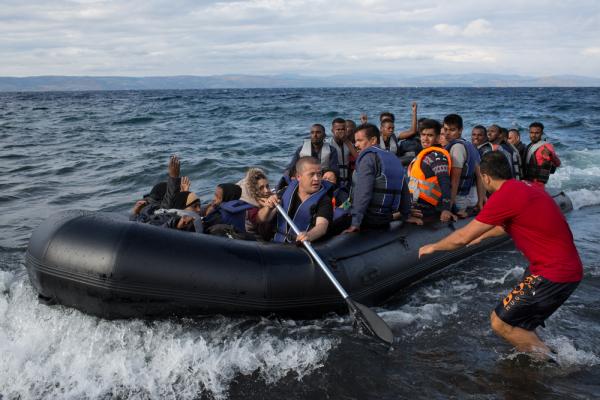More than 1,000 Mediterranean refugees died attempting to migrate to Europe in the last week of May, according to the International Organization of Migration.
"The past eight days marks one of the deadliest periods yet in the migration crisis, which is now in its fourth year," said the IOM's press release.
Most of this recent spike was due to a few major incidents.
The IOM reports:
The worst incident occurred [May 26] and involved an engineless wooden boat with over 550 people on board. The vessel was being towed by another smuggling boat, which had an estimated 800 people on board. After several hours, the smaller boat began to take on water.
According to testimonies gathered by IOM from survivors in Italy, the captain of the towing boat then cut the tow line. The second vessel continued to take on water and eventually capsized. Initial reports indicate most of the migrants aboard drowned, with just 87 survivors. The migrants included many Eritreans, but there were also Ethiopians and Sudanese on board.
IOM staff interviewed one survivor, Stefanos, a young Eritrean: "There were many women and boys in the hold. We were taking on water, but we had a pump that helped us to push the water out. When the pump ran out of fuel, we asked for more fuel to the captain of the first boat, who said no. At this point there was nothing left to do: the water was everywhere and we slowly started to sink. There were between about 35 women and 40 children next to me: they all died," he said.
As of May 25, there had been 1,475 deaths since the beginning of the year. By May 30, that number climbed to 2,443 — 968 deaths in just 5 days.
Some officials are attributing this spike to smugglers taking risks with poorer boats as the weather gets nicer.
"The increase in numbers of arrivals is attributable, in part, to better weather, and in part to the use of bigger wooden boats that can carry more people than the rubber boats usually used," said Federico Soda, director of the IOM Coordination Office for the Mediterranean in Rome. "Smugglers put over 700 migrants in the wooden boats, whereas the rubber ones generally carry only 100 to 120 people."
In the case of the engineless wooden boat that sunk May 26, survivors said they did not want to make the trip in such a vessel, but were forced aboard by smugglers.
“On the ship the smugglers took our mobiles and locked us inside for the most of the journey," said one man on another ship. "They were on the upper deck, where they were driving and smoking marihuana. They didn’t let us see them. They just shouted at us: 'Shut up! Shut up!' They didn’t give us food or water for 36 hours. There was no toilet on our deck."
Despite the rising death tolls and corrupt smuggling practices, rescue teams continue to make massive gains against the conditions. More than 13,000 migrants were rescued in the Channel of Sicily between May 23 and May 29.
"The rescue operations are indispensable and must continue — we commend all those involved in these life saving efforts," Soda said. "But these operations are not in and of themselves a solution. We must come together to change irregular, dangerous, and costly migration to migration that is legal, safe, and orderly."
Read more at the International Organization for Migration.
Got something to say about what you're reading? We value your feedback!
